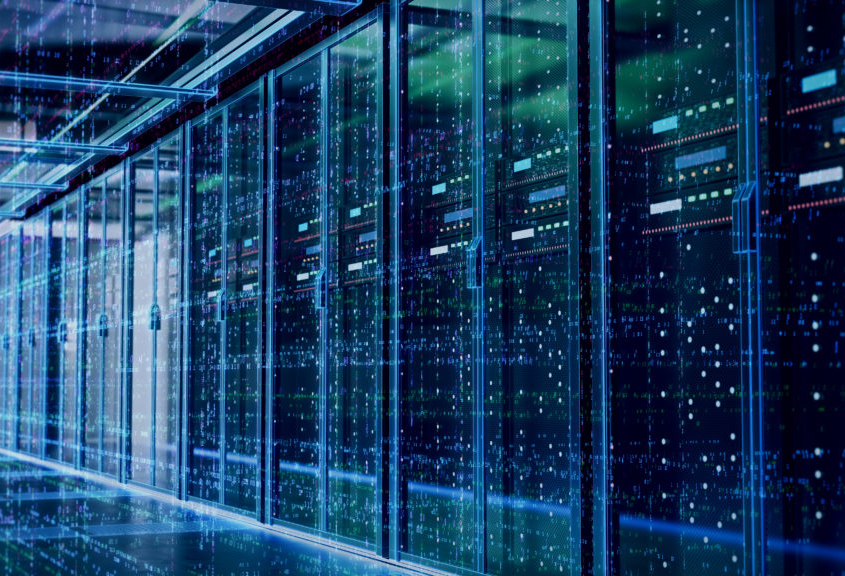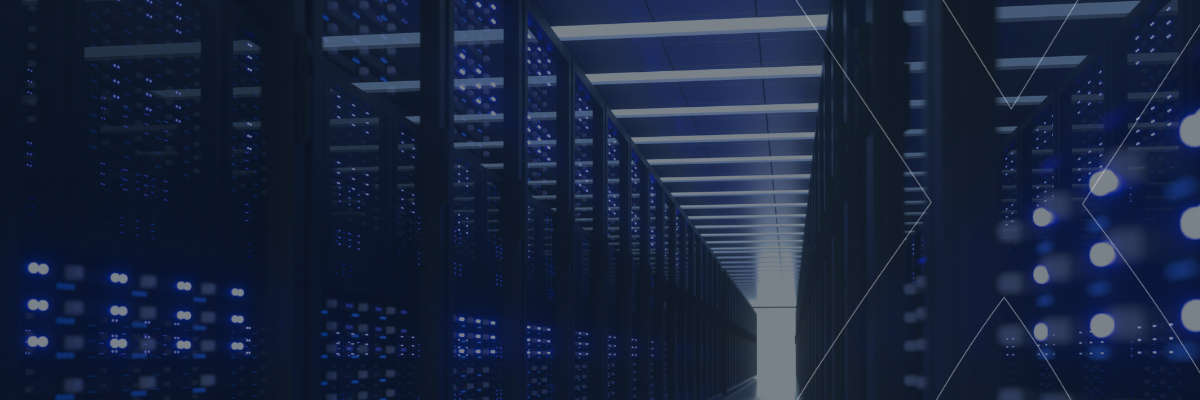Much of the economy rests on data centers and so they too must look to prioritize sustainability.
This blog takes a look at data center sustainability, what to look out for when it comes to choosing a data center and the TecEx solution for getting you there. Covering the energy efficiency, water usage, and considerations for green data centers, we look at how your choices can affect the planet.
Data Center Sustainability
As more organizations utilize technology to transform their business practices, the demand for data increases, increasing the need for data centers and servers to meet this rise in data consumption. This means that data centers are getting bigger and there are more of them, so energy consumption also increases.
The Information and Communication Technology Sectors accounts for around 2% of global Greenhouse Gas (GHG) emissions, a number equivalent to the airline industry. Data centers are thought to be one of
the largest energy consumers in the US but with global agreements in place for countries to reduce their carbon footprints, there is pressure on businesses to adopt more sustainable practices. Much of the economy rests on data centers and so they too must look to prioritize sustainability.
What is Data Center Sustainability?
Data center sustainability is the practice of reducing a data center’s impact on the environment. Sustainable data centers are committed to energy conservation, efficiency, and utilising renewable energy solutions. The aim of data center sustainability is to produce net-zero carbon emissions.
There are a number of agreements around the world dedicated to data center sustainability. Most notably the Climate Neutral Data Centre Pact, active in Europe. This looks to provide sustainability targets for data centers in relation to their energy and water consumption and carbon emissions.

What Makes a Green Data Center?
When looking at what makes a green data center, there are a number of factors to consider. Simply focusing on one area of sustainability is not enough. Green data centers must be committed to improving their overall sustainability to drastically reduce their carbon footprint, with the aim of hitting net-zero carbon emissions.
Green data centers focus on energy conservation, water conservation, and renewable energy solutions. This is measured via various factors to determine sustainability and opportunities for further improvements.
How is Data Center Sustainability Measured?
Data center sustainability can be measured in a variety of ways. Different agreements set out different measures of sustainability.
Energy Efficiency
Data centers must measure their energy consumption to ensure that energy is being consumed efficiently using Power Use Effectiveness (PUE) targets. PUE’s look at the energy being consumed by the IT equipment alone versus overall energy consumption of the center.
The Climate Neutral Data Centre Pact specifies that energy efficiency should be a PUE target of 1.3 for new data centers at full capacity in a cool setting by 2025. For warmer climates, the target is 1.4.
Renewable Energy
The proportion of renewable energy used to power data centers impacts their sustainability status. Green data centers should look to be 100% powered by renewable energy sources such as wind and solar by the year 2030.
Water Efficiency
Water might not be the first thing you think of when it comes to data centers however, large amounts of water are used every year for computer cooling. With such a large amount of IT equipment, overheating can lead to server failure. Water Usage Effectiveness (WUE) and water conservation targets look to reduce the amount of water used by data centers in cooling.
Whilst previous cooling systems wasted a lot of water, effective cooling system design can drastically reduce this. Closed loop systems are becoming more prominent, recycling water to reduce waste and improve computer cooling.
Circular Economy
Sustainable data centers should be committed to the circular economy. Broken equipment such as servers should be repaired and recycled. Heat waste should also be reused where possible. Some green data centres work with local communities, interconnecting with district heating systems.
Sustainable Construction
Data center sustainability doesn’t just apply to operating standards. As more data centers are built, sustainability should also be considered at the planning and construction stage. Constructing to Green Building Certifications can help to improve efficiency from the outset. Sustainable and local materials should be used where possible.
The building footprint can also have an impact on energy consumption. Building taller to allow for larger server racks can help to keep the building footprint to a minimum and can aid cooling efficiency.
Battery Technology
Much of the equipment in data centers relies on battery power. The manufacture and consumption of batteries can be bad for the environment. Utilizing new battery technology results in fewer, longer lasting batteries. This helps to reduce energy consumption and environmental impact.

Tracking Consumption & Waste
In order to accurately measure data center sustainability, an accurate picture of energy and water consumption is essential. Without the appropriate means of tracking efficiency, targets cannot be met and opportunities for improvement identified.
Sustainable data centers should look to incorporate integrated building management software that allows energy waste to be monitored. This can lead to tangible actions such as layout redesign to improve cold airflow and reduce energy and water consumed for cooling.
Prioritising end-of-life management is key to sustainability. Rather than old equipment heading straight to landfills, businesses should promote the re-use of items, and incorporate redeployment options into business practices and manufacturing streams. Further, if items are improperly recycled this can lead to environmentally and human health issues, not to mention brand damage. TecEx offers a seamless Exporter of Record (EOR) service that can help you export your end of use IT hardware so that you can dispose of all e-waste safely and sustainably, refurbish where necessary, and reduce your reliance on virgin materials.
Why is Data Center Sustainability Important?
The demand for data continues to grow at record speed. The IDC estimates that global data load will reach an estimated 175ZB by the year 2025. In 2018 the global data load was around 33ZB. As the data load grows, more space must be created to store this data. If data centers are not operated sustainably, this will result in increased emissions, contributing further to climate change.
Data center sustainability can also help operators to cut costs. Although there may be an initial cost outlay to implement new systems, increasing efficiency helps to reduce energy and water consumption resulting in lower costs overall.

There has also been a shift in global attitudes with customers and businesses placing more importance on sustainability. This may make them more likely to work a sustainable data center partner in order to meet internal targets.
Considerations for Green Data Center Design
Green data center design is an essential step in the global fight against climate change. However, with all things certain, considerations must be taken into account.
Technology
Innovation plays an important role in sustainability. With new technologies, data center efficiency can be improved. Whilst cooling system redesign can help to reduce water consumption, with new technology these systems may be able to be further improved.
There may be scope to implement cooling systems that cool only the servers rather than the whole room. To make these solutions commonplace, technology may need to catch up.
Getting new technology to the data center could be more troublesome than actually procuring the latest innovative technology. This dual-use gear is highly regulated, and there is a need to partner with companies like TecEx to consult on your project from a compliance perspective.
Energy Procurement
Accessibility can be a factor in the procurement of renewable energy. At certain times, it can be difficult to determine whether energy received is from renewable sources. At peak times, the energy required may outweigh the amount of renewable energy available. As renewable energy production increases, renewable energy procurement methods may become more accessible. There are also other options such as generating energy on-site.
Collaboration
For truly sustainable data center design, a high level of collaboration between sustainability, design, construction, and management teams is required. Teams must work together to meet targets and incorporate sustainability into the fabric of the design from the very start. This may involve short-term costs however, investment in efficiency helps to reduce long-term costs by saving on energy and water.
Partnering with TecEx for your central procurement needs can form part of a sustainable shipping loop. Ensuring your gear is consolidated into a single shipment is a cost-benefit as well as reduces your carbon footprint. As a specialized Importer of Record (IOR), TecEx ensures efficient first-time customs clearance.
Drivers of Change for Data Center Sustainability
The data center industry has been rapidly changing since 2007 when key players such as Amazon, Google, and Facebook began making improvements to their data center facilities and efficiency. To keep up with the competition, other data centers began to place more emphasis on improving efficiency also. This was one of the main drivers of change in the industry. Efficiency in the deployment of mission-critical hardware also forms part of this process. Lack of knowledge or ignorance of requirements can lead to significant delays with international deployments and customs clearance. Ensuring first-time customs clearance guarantees no need for multiple trips for a single shipment, saving you time and money and limiting your carbon footprint.
More recently, customers are behind the move towards sustainability. Consumers are more engaged with businesses than ever before. Data shows that a large proportion of consumers are more likely to buy from a business that mirrors their sustainability values. Due to this, more businesses are looking for sustainable partners to help them meet their goals. Data is a huge factor in modern businesses, making finding a green data center a significant part of many sustainability plans.
Air Trunk
Air Trunk currently have the lowest PUE in the Asia-Pacific region. They are committed to sustainable business practices aligning their emission goals with the Paris agreement, aiming for a waste-free office, and diverting waste away from landfills, as well as implementing water conservation strategies.
Ark
Ark Data Centres are part of the Climate Neutral Data Centre Pact, working towards climate neutrality by 2030. They have developed a ‘Water Buffering and Saving Mode’ for their cooling equipment reducing their original peak water usage by 85%. They also harvest rainwater and have one of the lowest PUEs in the data center industry.
Echelon
Based in Ireland, Echelon is looking to provide halfway house solutions to mitigate against ageing and overburdened grid infrastructure as the industry moves towards more sustainable practices. They use energy only as required, using waste heat to dry the by-products needed to produce fertilizer using the adjacent dock resource as a heat exchange to reduce the energy consumption of the data center.
Scala
Scala Data Centres operate in accordance with sustainable environmental practices. They were Latin America’s first data center operator to use 100% renewable, certified energy. They are also recognized for being carbon neutral in 2021 and working towards economic development and deforestation reduction.
The demand for data center services is expected to continue growing in this data-centric age. Businesses need to be mindful of how their operations impact the planet, highlighting environmental sustainability as a business imperative for sustainable growth and as a global goal to mitigate climate disasters.
For all your import and export needs, contact us today!
